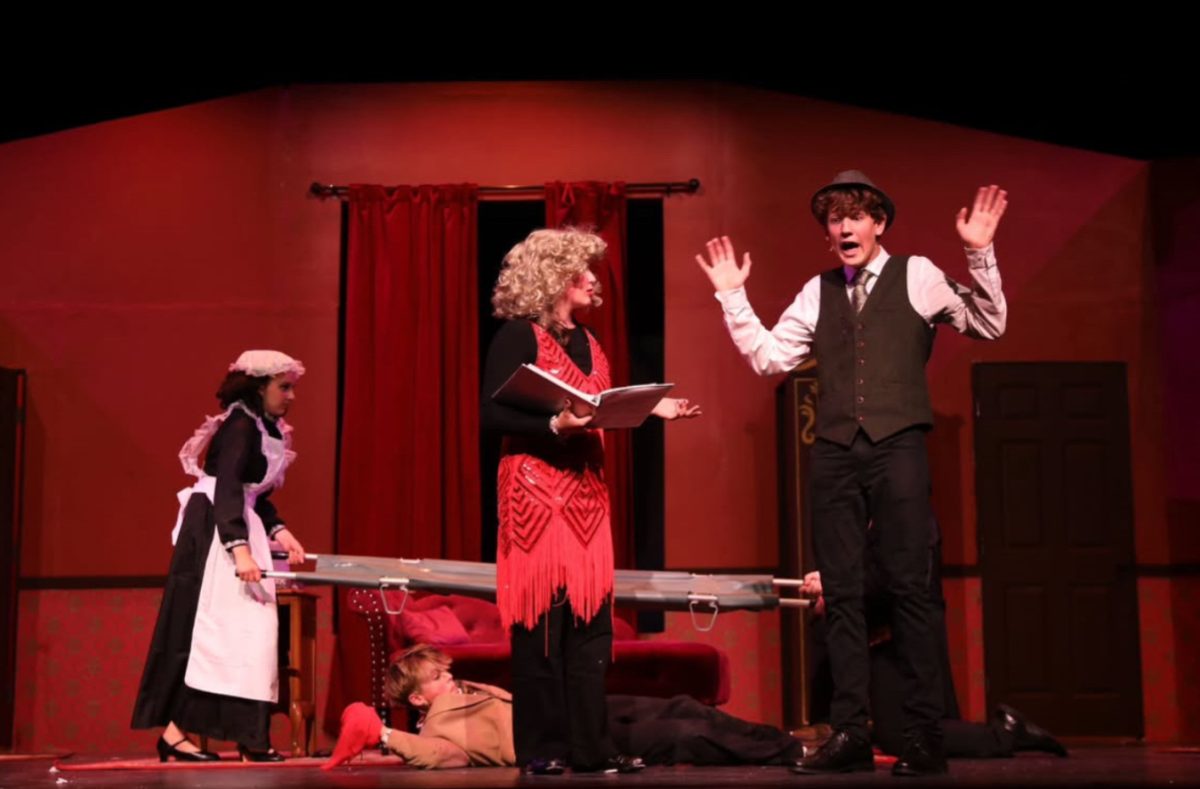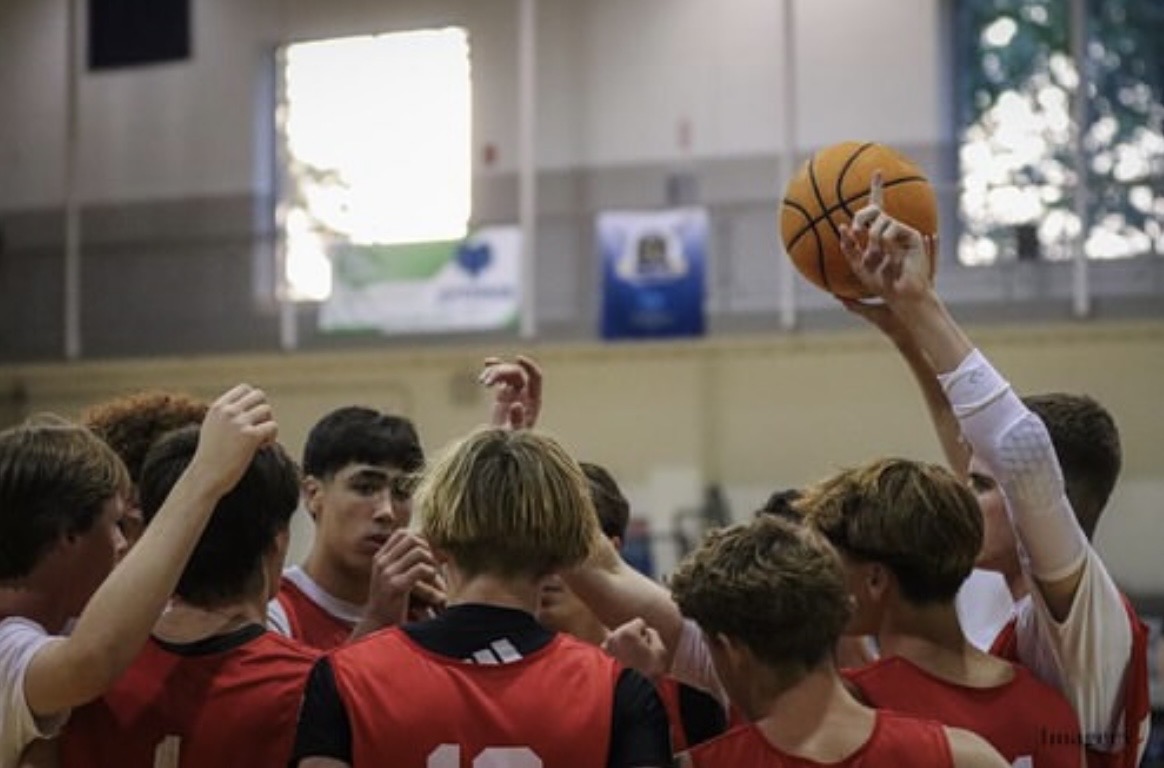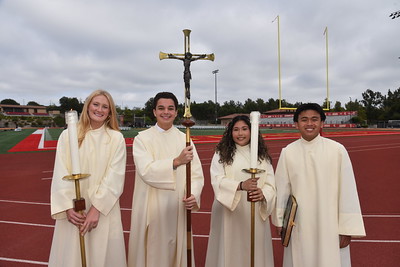Rowing teams garner 16 medals
Revamped training increases race wins
Members of the Cathedral Catholic High School varsity crew team display their medals after the team’s most recent competition.
As the championship competition came to a close, the Cathedral Catholic High School boys varsity rowing team watched the boats of their competitors catch up in the last few seconds of their race.
Instead of letting the stress of the moment get the better of them, the boys adapted to the adrenaline of the sport, giving everything they had to the last stroke of the race that would push the team to victory.
“The boy’s races can be stressful to watch, but ultimately it is up to them to push themselves beyond their perceived limits,” CCHS girls crew member Hannah Crousore ‘19 said. “Rowing is not necessarily a spectator sport, but watching that specific race truly was a nailbiter.”
The CCHS boys and girls rowing teams recently competed in the U.S. Rowing West Coast Scholastic Championship at the Chula Vista former Olympic training center, where they battled against six other high schools in a total of 19 races, eventually compiling 16 medals across both teams.
While both squads performed well, the girls team specifically accomplished some wins of its own at the competition, finding success in unexpected places.
“The girls coaches were surprised and pleased with the results for the varsity and junior varsity eights, as this is the first year we have performed well in that boat,” girls varsity head coach Arthur Sloate said. “Our past success has been in smaller boats, such as the double scull and coxed four.”
An eight, a rowing boat designed for eight people and a coxswain, is fairly similar to a coxed four with the exception of size and amount of rowers. While the team’s improvement in eights correlates to its similar success in the coxed four event, success in the double scull does not show such a correlation.
“A double is a completely different ball game,” CCHS crew member Silvia Roy ‘18 said. “There is no coxswain, so it is considered a ‘blind boat’ because one of the two rowers in the boat must steer. This season, I believe we have been more successful in the eight because of the new rowers who have stepped up and really applied themselves to the sport.”
As Roy mentioned, the girls squad consisted of many new members who had to overcome the challenges that accompany such a change.
“As far as rebuilding, we have plenty of new girls who are amazing inside and out and who truly have committed themselves and dedicated everything they have to making boats fast,” Crousore said.
Athletes do not face the challenge alone, however, and they accredit their success to the daily practice time that CCHS crew demands.
While the teams usually partake in ergometer training two days a week, they also spend a majority of their spring training time in the water at the Youth Aquatic Center on Fiesta Island four days a week.
Boys head coach Jeff Kiser, who took over the boys program in 2016, is responsible for the team’s intensive training schedule, as he sculpted training to fit the needs of the team.
“This year we’ve changed a few key training components that has led us to an increase in race wins overall,” Mr. Kiser said. “We reduced the mid-distance running and replaced it with a bit more long range cross country-style runs to boost our endurance. We also attempted to row in more consistent line-ups, which can sometimes be difficult in some of the regattas that we compete in.”
The team has high hopes for next year’s squads, and after the high performance training camp later this summer, the boys and girls coaching staffs expect to start the fall camp with the largest novice group to date.
“With numbers comes the possibility to keep line-ups consistent to improve their rowing prowess,” Mr. Kiser said.
After success in recent years, the girls team saw this season as an opportunity to step up the training a bit, as the coaches felt they would have a strong group of returners. Unfortunately, the number of returners decreased quickly, and the girls had half the number expected.
“We realized we would need to be quicker to make up for the lack of experience,” Mr. Sloate said. “So, from the start we added more running, stadiums, and cardio. On the water, we spent more time in small boats to hone our technical abilities.”
Sloate’s training philosophy paid off in the end when the girls team fought through its struggles to achieve medals in multiple events alongside its successful male counterpart.
“The team has really come together this year,” Roy said. “I think the source of growth in the team comes from the challenges we face in the sport we share. Rowing is hard and we bond in that. We share the pain and work hard for each other and with each other.”

As my second year as El Cid Editor-in-Chief begins, I look forward to spending my senior year improving the newspaper and eventually leaving El Cid in...





















































